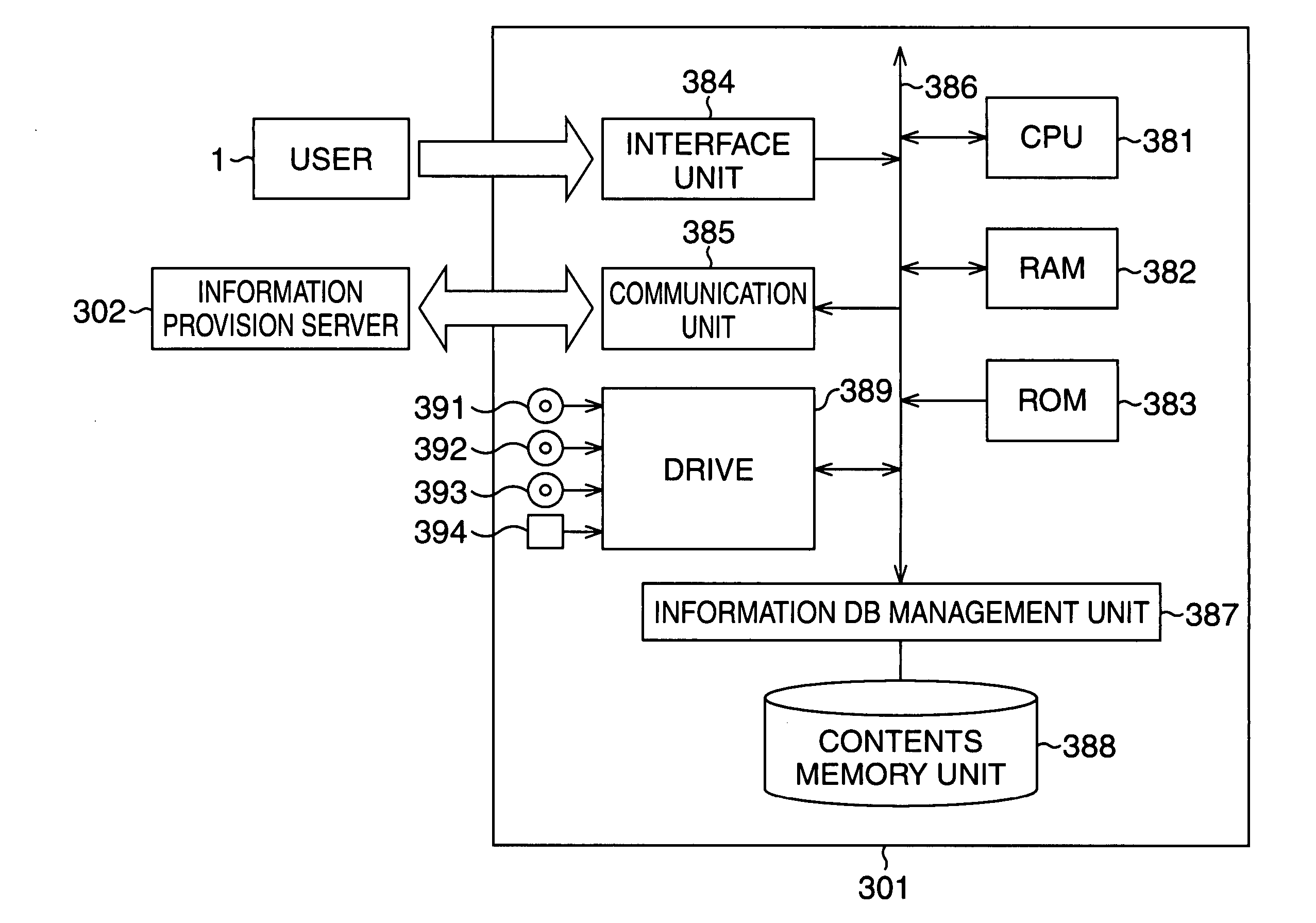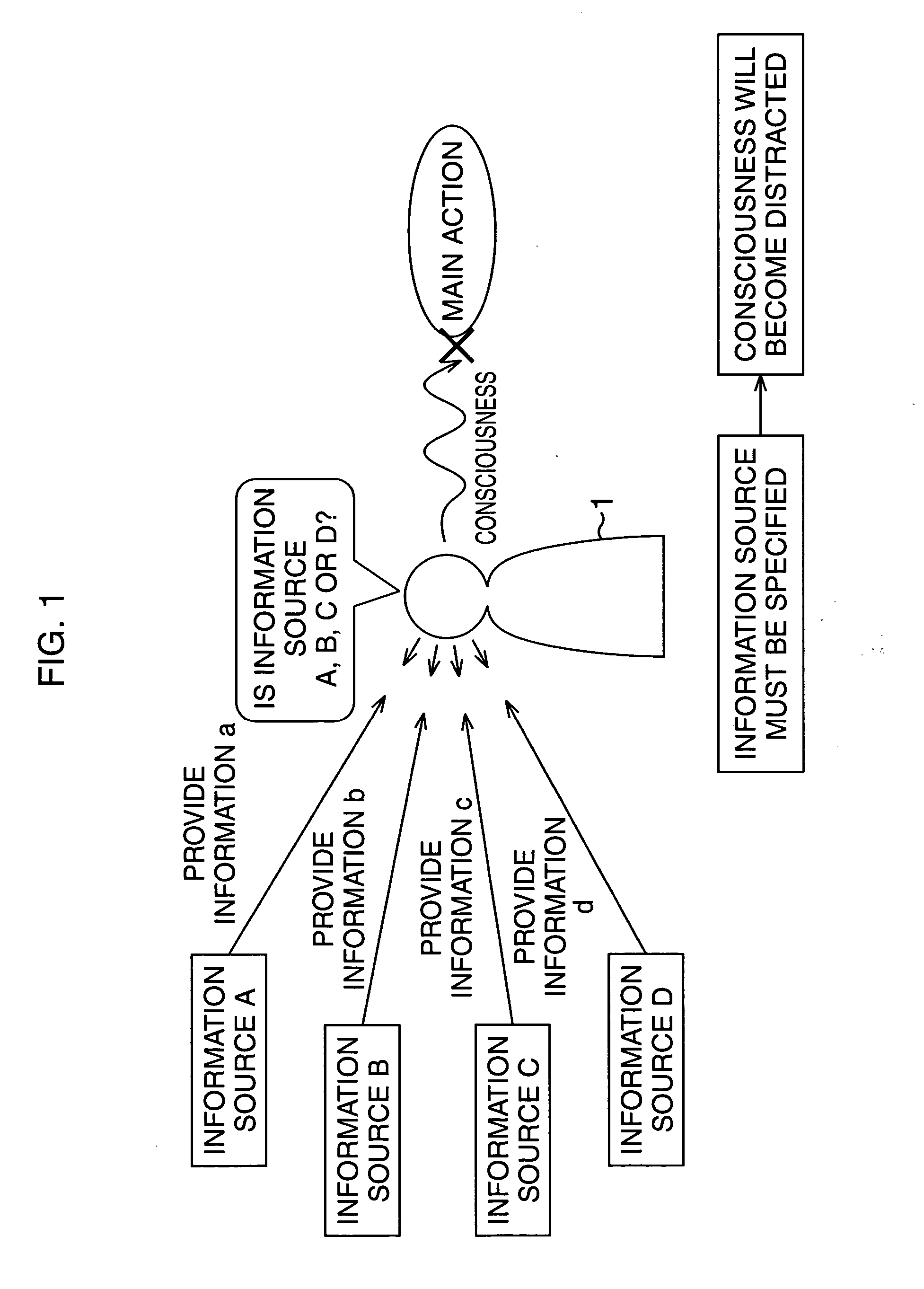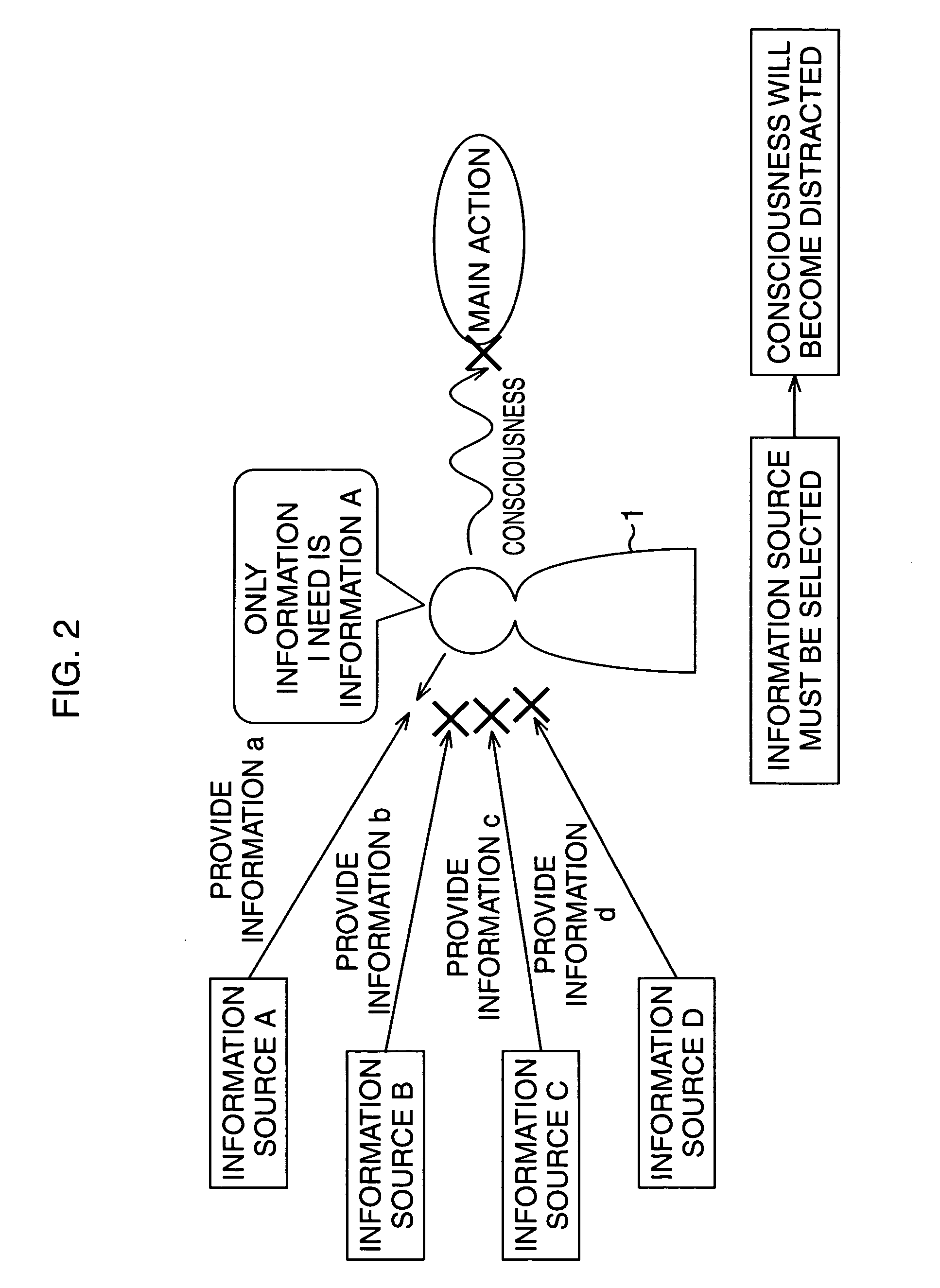Nevertheless, since these are being provided with individual technologies or services, a user is required to properly use the respective schemes.
This will raise a significant problem from the perspective of convenience.
In other words, since a music program may be on the air when the [driver] actually wishes to listen to the weather forecast, or news may be on the air when the [driver] actually wishes to listen to traffic information, the broadcast is not providing a service that enables the [listener] to listen to information of one's choice at any time one pleases.
Nevertheless, when the main action is the operation of a vehicle such as driving a car, it could be said that the act of listening to news, weather forecast or traffic information from an FM radio, operating a
car audio system with a CD (
Compact Disc) changer to play music, and acquiring
route guide information while watching the display of the car navigation device is an extremely dangerous act from the perspective of the [driver's] attention being diverted from the driving operation.
In the foregoing case, diverting one's attention from the main action needlessly raises problems in terms of safety as described above.
Moreover, it could be said that a user focusing one's
consciousness to the acts listed below is under a situation wherein it is difficult to pay attention to a plurality of information sources at the same time: Driving or operation of a vehicle, aircraft or ship;
Desk work,
assembly, packaging or various operations of machines, devices or equipment servicing; Appreciation of movies or music; Work, studying or reading; and Conversation with others during servicing, meetings or presentations.
In addition, a user focusing one's
consciousness to the acts listed below will have problems in terms of safety when paying attention to a plurality of information sources at the same time: Act of operating transports such as a vehicle, motorcycle, aircraft, ship or
train in a particularly dangerous situation; Operation of a crane; Operation or handling of dangerous objects at high places; and Other operations requiring a high level of concentration.
When any one of the requirements is not satisfied, it is not possible to sufficiently achieve the object since the user's attention will be diverted from the main action.
Although there have been numerous methods for providing information to users from the past, all of these methods only satisfy a part of the requirements (A) to (I), and there was no method that satisfied all of the above.
In other words, since the [user 1] will have to pay close attention to this operation, even if there are other items of interest, it is difficult to implement two or more acts concurrently.
Nevertheless, since music will not be automatically renewed, unless new music is stored in the hard disk, the same music will be continuously played.
If so, the user 1 will become bored of the music that is repeatedly played, and the same problem as playing a CD will arise.
Unless this operation is performed, the user 1 will become bored of the music that is repeatedly played, and the same problem as playing a CD will arise.
Nevertheless, operation of the car
navigation system 71 is complicated, and the driver as the user 1 while driving the vehicle will have to divert one's attention and
line of sight from driving, and it is highly likely that this will lead to a dangerous situation.
Thus, operation of the car
navigation system 71 is a difficult operation for a driver while driving a vehicle.
Moreover, since a portable phone,
facsimile, email
transmitter /
receiver terminal device and Internet phone require numerous operations, the use of these devices is the most difficult for a user engaged in some kind of activity.
Although it is possible to receive and send emails by setting a communication module in a personal portable information terminal device such as a PDA (Personal Digital Assistant), the constitution is such that the operation is made with a
touch panel or keyboard, and this is not a simple operation that can be performed while engaged in another activity.
Nevertheless, for instance, a
system of consolidating all functions in a car
navigation system, displaying menus for performing these operations on the screen, and the user performing such operations while viewing the screen will require extremely complicated operations, and, since it will take much time just to look over the menus, the [user] will have no choice but to focus on the operation of the car navigation system.
It is impossible to engage in other activities while performing such operations.
Nevertheless, with only one type of contents, when this is viewed by a plurality of users 122, it will not be possible to meet the different needs of each user 122.
For example, in addition to the operation of driving the vehicle and viewing the
peripheral environment or meter panel of the vehicle, the [driver] will have to pay attention to the operation of the air conditioner, incoming calls and emails of the portable phone, operation of the CD changer, traffic information of the FM radio,
route guide of the car navigation system, screen of the car navigation system and so on, and, while personally judging which information is necessary and utilizing such necessary information, the [driver] will have to conduct extremely difficult activities such as adjusting the volume, operating the air conditioner and opening / closing the window.
To pay attention to numerous items while driving a vehicle will lead to the attention being diverted from the driving operation, and there is a significant problem in terms of safety.
Further, since the user's operation will be extremely complicated, there is also a problem in terms of convenience.
By merely consolidating the functions of every terminal into a single terminal, operations of the user for selecting which function to use will increase, and this may have the opposite effect of increasing the burden of the user.
If the presentation of information is not integrated, information will be provided in bits and pieces independently and in parallel from the respective information sources, and the user will have to simultaneously pay attention to information from the respective information sources to select and use the necessary information, and will not be able to focus one's
consciousness or attention to the main action.
Nevertheless, by merely consolidating all functions into a single terminal, the user will have to select the function to be used for outputting information upon receiving information, and the goal cannot be achieved since numerous operations and judgments other than the main action will be required.
Thus, the user will have no choice but to concentrate on the operation of extracting information, and will not be able to focus on the main action.
If it is not possible to deal with both scenes according to the condition of usage, the user will not be able to focus on the main action.
Thus, when new information arises, it is undesirable to interrupt the contents being reproduced without condition and to request the user's operation.
Since new information is constantly being generated, it is difficult to deal with this situation with a scheme in which the movement in relation to the operation is static.
If information is distributed in excess of the amount required by the user, unwanted traffic will occur in the network, and the memory area of the terminal will not be effectively utilized.
If [information] is provided when the user is not able to use such information, it may interrupt the user's main action or the user may forget the provided information.
With a system of individually providing information provided from a plurality of
information providers, information will be provided in bits and pieces independently and in parallel from the respective information sources, and the user will have to simultaneously pay attention to information from the respective information sources to select and use the necessary information, and will not be able to focus one's consciousness or attention to the main action.
With a
broadcasting-type service, it is not possible to provide a different service for each individual user or the state of use.
With a communication-type service, since individual services are integrated in an uncoordinated fashion, the user's operation will become complicated.
In a functional service such as tools and business applications provided with personal computers and PDAs, since the user will have to make numerous operations, it is difficult for a user engaged in another activity to simultaneously use such functional service.
 Login to View More
Login to View More  Login to View More
Login to View More 


